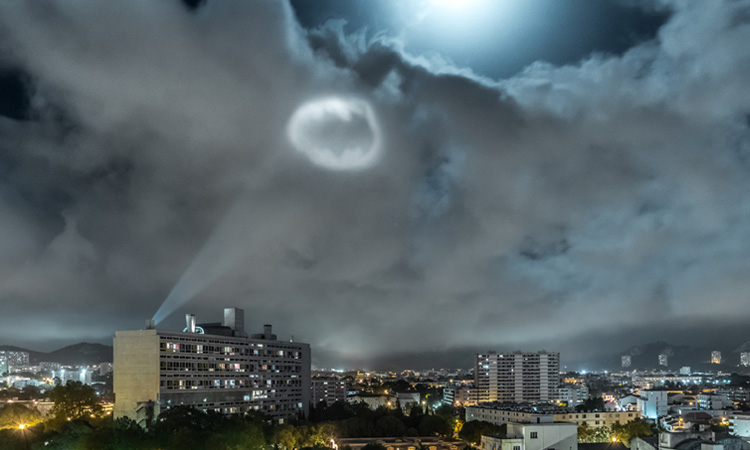Light Touch
Secrets of the Bat Signal
Investigating the real-life origin of, and physics behind, the celebrated beacon from the comic series Batman.
 A 2019 art installation atop Le Corbusier’s Cité Radieuse building in Marseille, France, produced a working Bat Signal. [Artist: A. Israel / Photo: S. Aboudaram, We Are Content(s)]
A 2019 art installation atop Le Corbusier’s Cité Radieuse building in Marseille, France, produced a working Bat Signal. [Artist: A. Israel / Photo: S. Aboudaram, We Are Content(s)]
By the beginning of 1942, most of the elements of the Batman mythos had been established in Detective Comics and Batman. He had his characteristic cowled costume, utility belt, “batarangs,” sidekick Robin and bat-themed vehicles. But one of his most recognizable devices had not yet appeared: the Bat Signal. In the lead story in the February 1942 Detective Comics, “The Case of the Costume-Clad Killers,” for the first time the Gotham City police send for Batman by using this dramatic new method. “Suddenly,” reads the narration at the top of the comics panel, “a gigantic cone of light pierces the dusk of day and etches an eerie symbol against a dark cloud—the silhouette of a Giant Bat!”
…Log in or become a member to view the full text of this article.
This article may be available for purchase via the search at Optica Publishing Group.
Optica Members get the full text of Optics & Photonics News, plus a variety of other member benefits.
